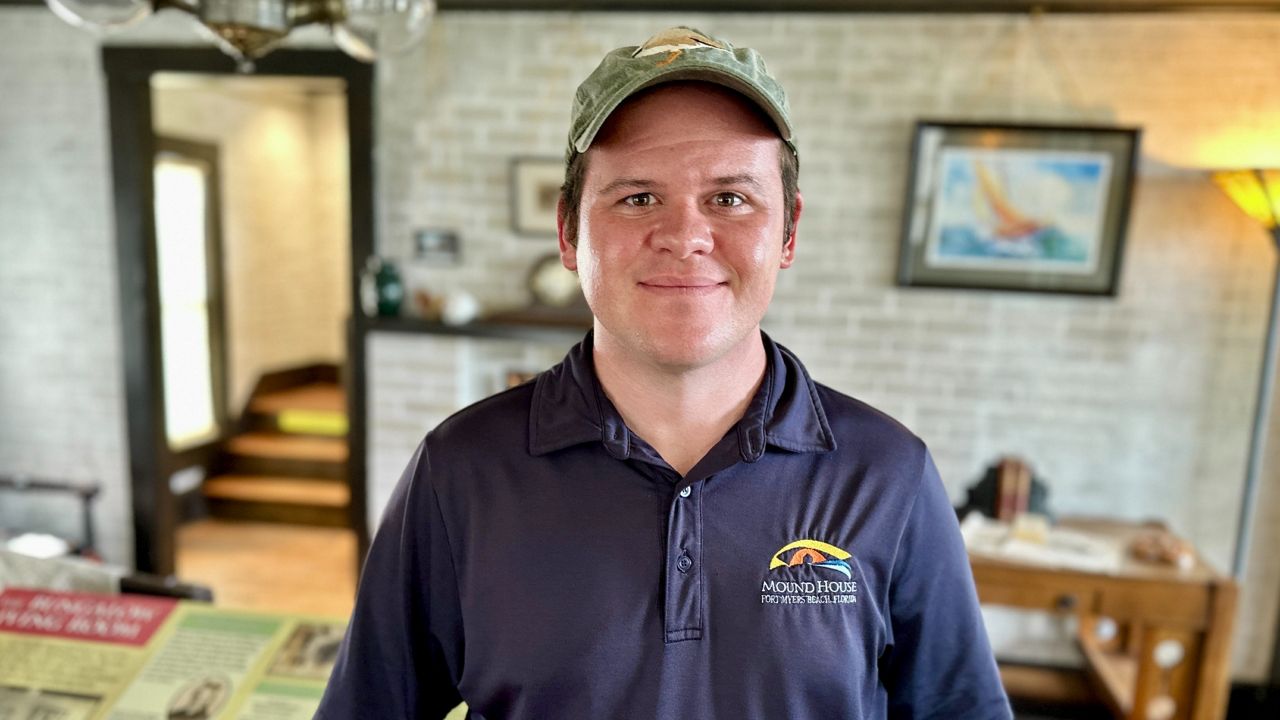FORT MYERS BEACH, Fla. — What came before the bow and arrow? — The atlatl.
“If you are a human on planet Earth, you have a hunter/gatherer ancestor,” said Adam Knight, the museum manager at the Mound House in the town of Fort Myers Beach.
That means somebody in your family used one. He’s holding the atlatl — a spear launcher, a light piece of wood about the length of your forearm. It gets a spear much farther with less exertion than if you threw it alone. It’s a hands-on part of the museum's shell mound tour.
The mound is a 2,000-year-old creation of the indigenous Calusa people.
The house is only a century old, with a little window on the floor to the mound below, all shells.
“This is a view of what’s underneath us right now,” Knight said. “Underneath the floorboards of the museum is the mound, a large shell mound.”
The Calusa engineered and built these mounds all throughout Southwest Florida.
And Knight brings the Calusa to life with their own artifacts — replicas from an 1896 archeological dig in the muck of Marco Island. There are two masks, both painted. The mangrove peat bog did not expose the masks to oxygen, so the mask survived more than 1,000 years, paint intact.

Knight called it a rare “lightning in a bottle” condition that allowed this preservation.
Then even more luck: a professional archeologist discovered the masks and other items, and they followed an accepted scientific method along with documentation.
There are hairpins carved from deer bones and embellished for people to handle, and the very ones they are based on are on the second floor of the museum.
“It really clicks that these were personal items,” Knight said. “Here are objects used in their daily lives.”
Museum visitors can even study recovered artifacts themselves through a magnifying lens.
All this to see the lives the Calusa built within this environment, enduring storms similar to 2022’s Hurricane Ian.
“The island was decimated — catastrophic damage,” Knight said.
But the Mound House, the oldest structure on the island, elevated, and on a peninsula surrounded by mangroves, is spared.
“So we have both the cultural resources and the natural resources protecting this property,” Knight said.
Right now, officials are repairing the museum's underground archeological exhibit, and they hope to reopen that segment of the grounds by year’s end.
So you can continue to learn about the Calusa and everyone that came after them, thanks to the Calusa.



